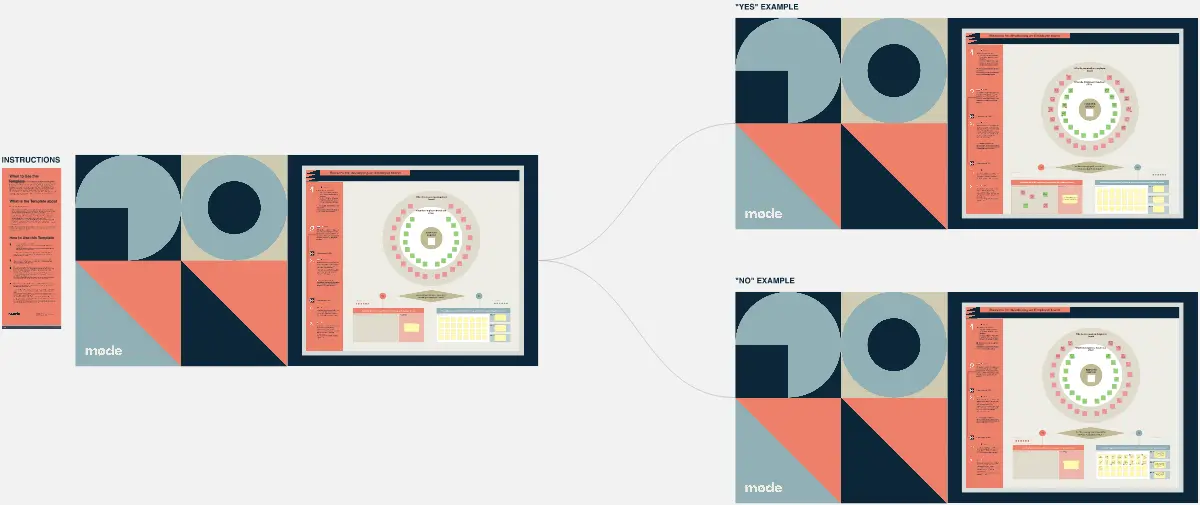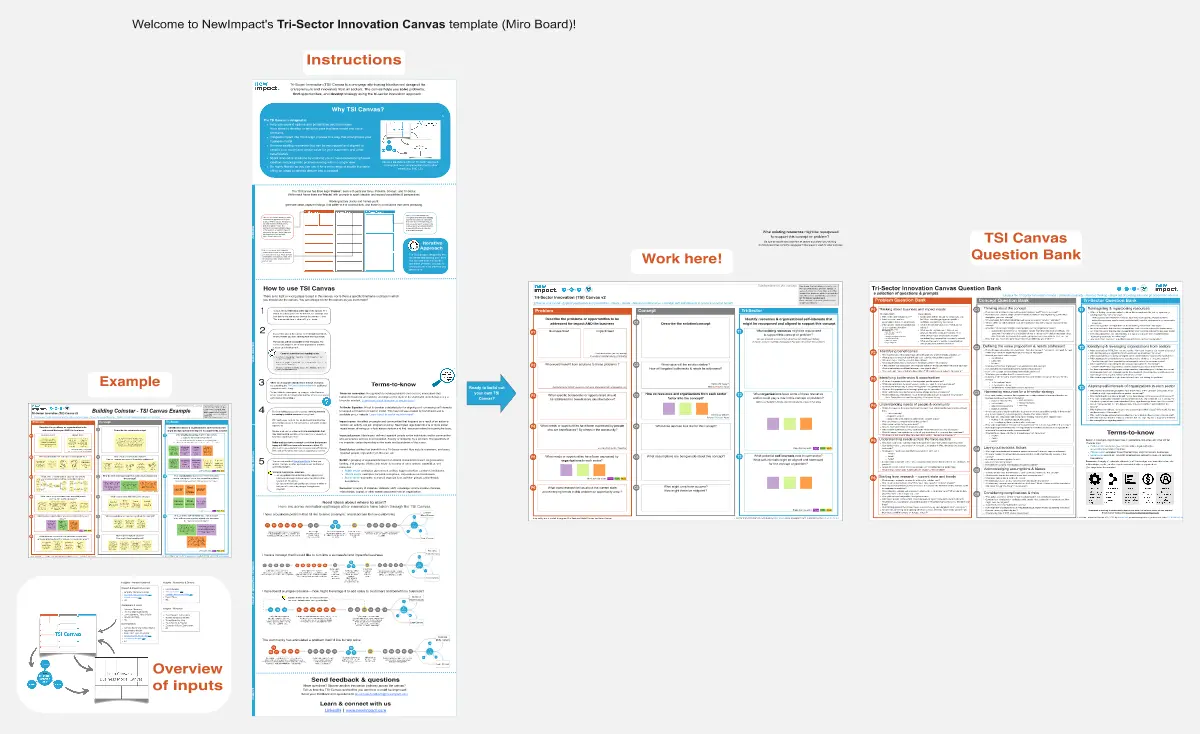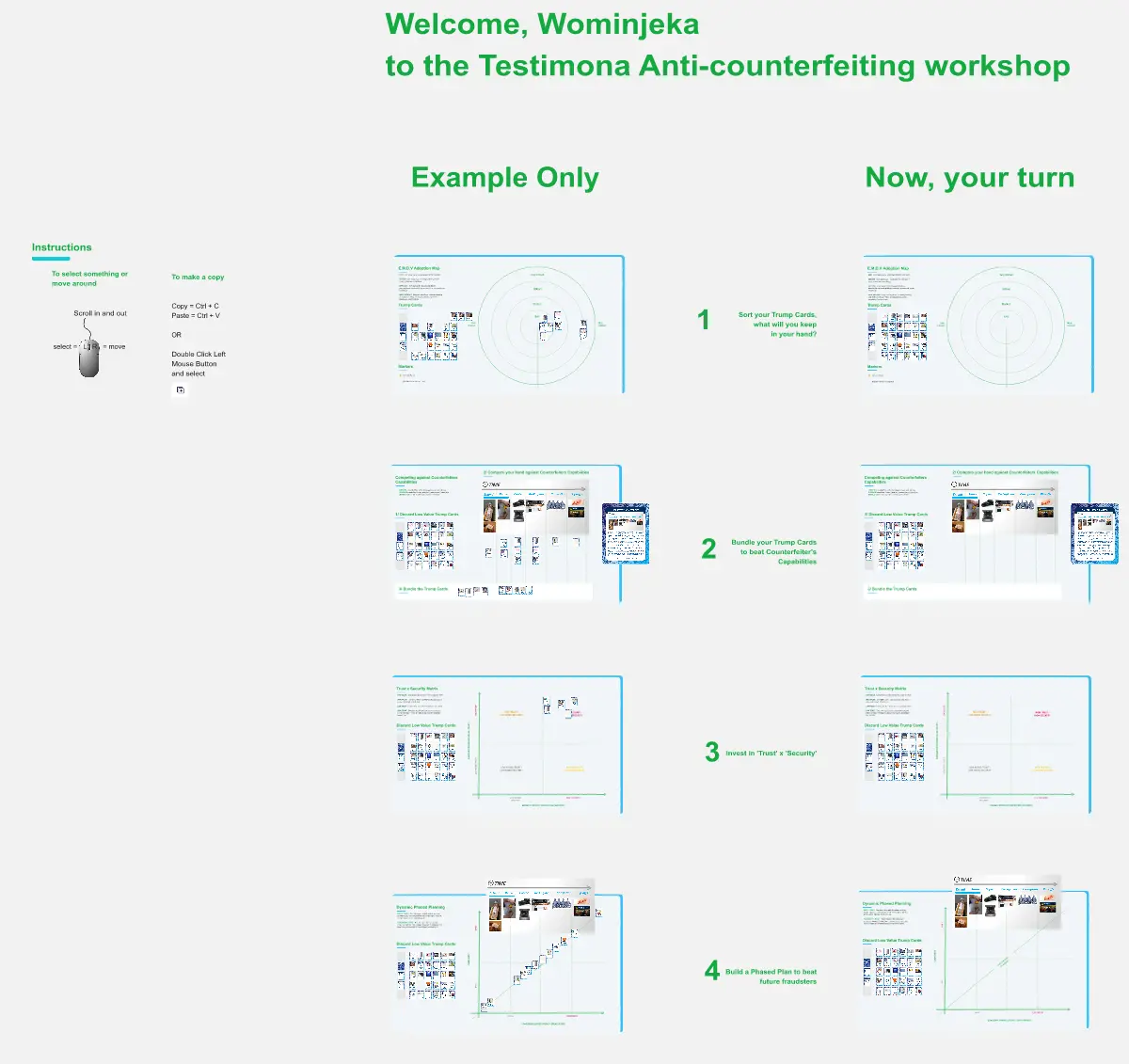When to Use this Template
The Empathy Map is a very effective tool from the Design Thinking cycle that allows you to put yourself in the place of a client/consumer/user/stakeholder, understand his/her feelings and thoughts and show empathy towards his/her actions.
Unlike most companies that use the empathy map after conducting research or testing to consolidate and structure all the information received, in Møde this technique is used as a part of the branding process to revive the brand itself - giving it a unique character and engaging tone. In our interpretation, the image of a particular product/service/employer becomes an object of personalization.
In this regard, this workshop is especially relevant for brand managers and strategic agencies when developing a bright and relevant positioning for the target audience or when repositioning an existing brand.
What is the Template About
The template developed by the Møde team allows you to:
fix the role that the brand will play in the life of the target audience (to understand the main function that the brand will perform for a person, and from what position it will perform it - as a teacher/mentor/friend/buddy, etc.)
to look at the brand as a living person and form its personality (to humanize the brand by endowing it with human qualities: character, tone, style of behavior, and communication). These characteristics are selected based on the role of the brand you have chosen for the life of the audience. They make the brand image interesting for the consumer/employee in terms of communication and interaction as such - this is ensured by taking into account the key functional and emotional needs of the audience, its detailed profile, motivation, and insight (all of these or only available audience data can be used to compile an empathy map).
to detail the developed personality so that it is subsequently implemented at the communication level and can become part of the identifiers for the target audience (to increase the level of brand awareness).
In addition, this template is a part of the educational intensive course on building an Employer brand of the company (it appears as a part of the homework after the second training day dedicated to the study of the target audience of the brand).
How to Use this Template
1. Ask the participants to jointly form the image of the brand step by step, starting from external factors/aspects and ending with its internal, unique character and tone:
1) Determine what role the brand will play in the life of the target audience
2) Based on the role, model the possible context of the brand's existence as a person:
3) Detail its reaction to the surrounding context:
Determine what it does on a regular basis
Determine what the brand is talking about with people around it (depending on the project goal, they may be customers/users/employees/job seekers, etc.)
4) Formalize its tone of communication (style of interaction with the audience)
5) Highlight the basic character traits (distinctive features that should arise in memory if we imagine that the brand is a living and real person)
Tip 1: It is important that participants write each aspect on a separate sticker.
Tip 2: The aspect should be disclosed in as much detail as possible - with clarification of what this or that element of the environment, way of actions, thoughts, and communication, as well as a specific character trait is expressed in. The detail of the description guarantees the uniqueness and originality of the brand being developed and also negates the risk of misinterpretation of the aspect at the stage of creating a creative frame (Big Idea).
2. Ask each participant to use a voting dot next to the corresponding block to highlight 1 key element in each of them - what they consider important for the brand, its external image, and behavior.
3. Ask the participants, based on all the highlighted key elements, to finalize the results of their work together:
1) Determine who the developed brand looks like, and what character or person it resembles (this guarantees the reality of the brand image - if it is impossible to find an analog of the brand in the real or fictional world, participants should return to the stage of brand image formation and try to walk the path anew, being as honest and sincere as possible towards themselves and their audience)
2) Synthesize everything marked in the format of a detailed description (profile) of the brand as a person.






